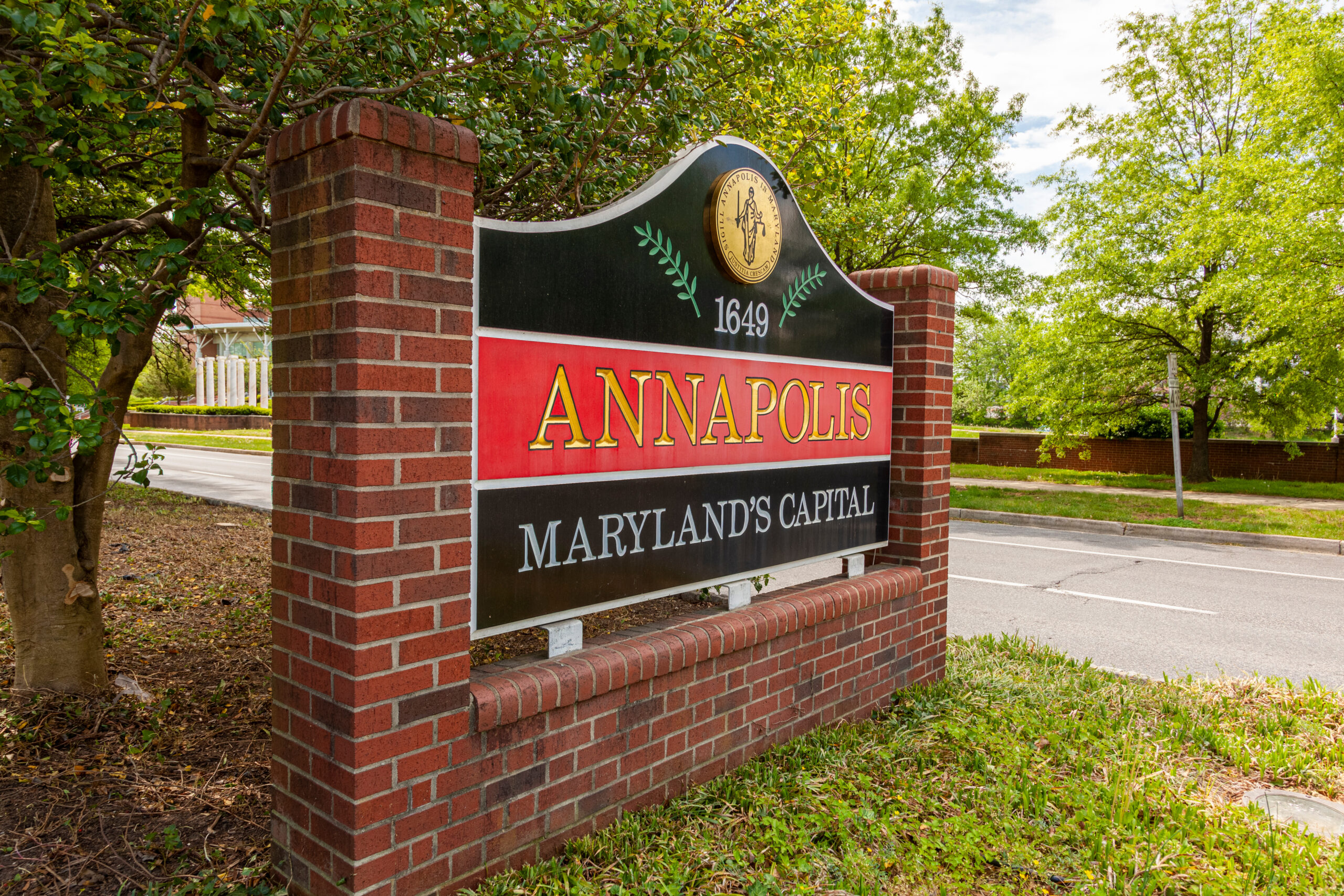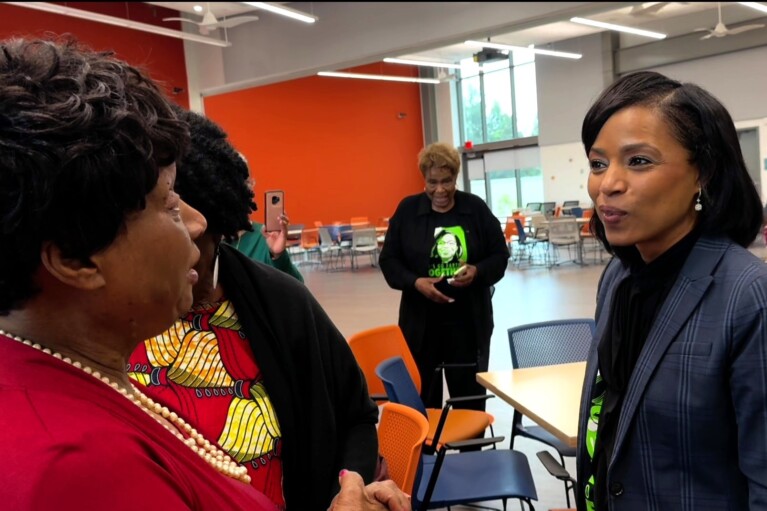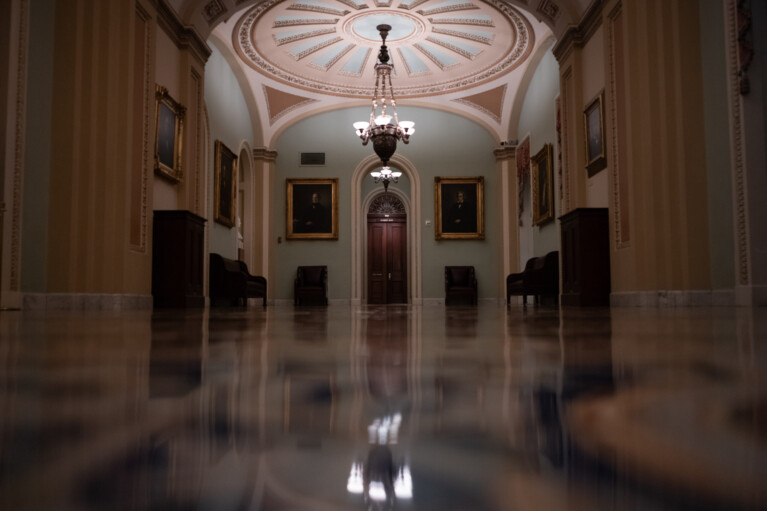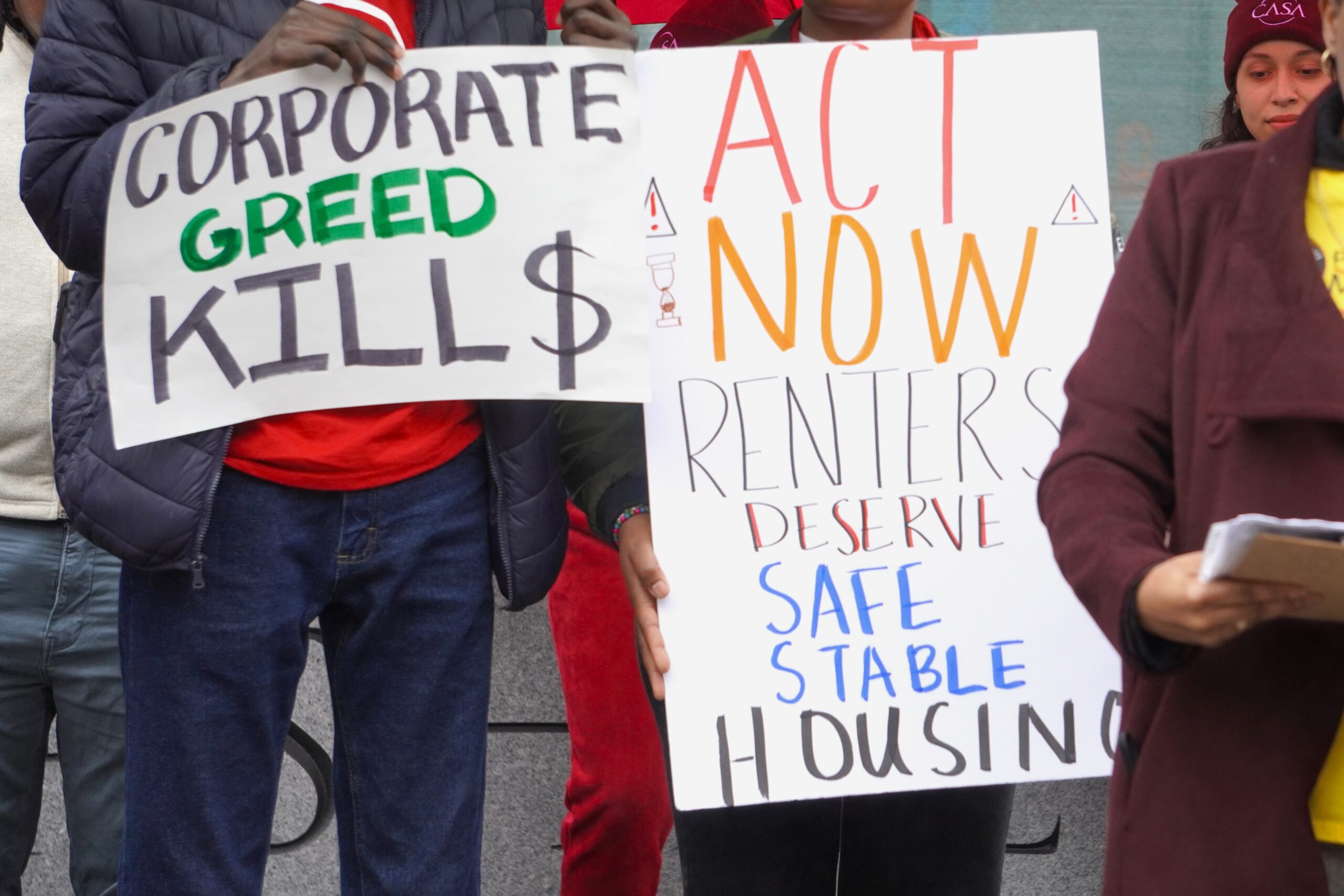From the Almanac of American Politics: Maryland’s Democratic trend over the years

Editor’s Note: Today Maryland Matters offers a preview of the newest edition of the Almanac of American Politics, the classic political reference book for political junkies.
For more than five decades, the Almanac of American Politics has set the standard for political reference books.
This month, the Almanac will be publishing its 2024 edition, with some 2,200 pages offering fully updated chapters on all 435 House members and their districts, all 100 senators, all 50 states and governors, and more.
This state overview was written by Louis Jacobson, a senior author of the Almanac and a contributor to seven volumes.
***
Maryland, one of the nation’s most Democratic states, serves as a microcosm of the trends shaping today’s Democratic Party: continuing lopsided support in ethnically and racially diverse urban areas, growing Democratic success with affluent, suburban voters and government employees, and a waning of the party’s influence in rural areas.
Just south of the Mason-Dixon line and north of the Union-Confederate lines during most of the Civil War (and the scene of its bloodiest one-day battle, Antietam), Maryland is a crossroads state, with both Northern and Southern influences and with both industrial and rural economies. This was the only one of the 13 colonies founded by Roman Catholics — the Calvert family — and its embrace of religious tolerance came less from high-minded ideals than from the Calverts’ desire to protect their property from religious attacks. Similarly, although hot-blooded Baltimoreans wanted to secede from the Union in 1861, cooler heads prevailed. (The state song, until its elimination in 2021, was Maryland, My Maryland, based on a poem condemning Abraham Lincoln’s suppression of pro-Confederate rioters.)
The Puritan impulse was never lively in Maryland. Prohibition was enforced only laxly in Baltimore, to the delight of its great journalist-cum-lexicographer H.L. Mencken. Slot machines were legal for years in the rural counties of the Eastern Shore and, after years of controversy and over the pleas of racetrack owners, were legalized statewide in 2008; voters approved table games in 2012 and mobile sports betting in 2020, with the latter implemented belatedly in November 2022. In some corners of the state, segregation was evident well into the 1960s, and longstanding efforts to remedy discrimination within the state’s university system finally reached a legal settlement in 2021. Much of Maryland’s political history reads like a chronicle of rogues, notably Spiro T. Agnew, who was Maryland’s governor when Richard Nixon tapped him for his 1968 ticket and then resigned as vice president in October 1973 when he pleaded guilty to income tax evasion. Maryland’s genial tolerance may have given it a little too savory a history, but this state cherishes its uniqueness.
The Chesapeake Bay is the nation’s largest estuary, with water saltier than a river but fresher than the ocean, and with unique shellfish and watermen. Pollution and years of overharvesting drastically reduced its yield, and the terrapin and Chesapeake oyster are rare today. But an ongoing statewide Save-the-Bay movement has had a positive impact. After years of improvements for such species as crabs and anchovies, rising water temperatures and an increase in sediment have hampered progress. In 2022, Maryland and Virginia officials reported the smallest populations of blue crabs since tracking began in 1990, though Maryland did have its most plentiful harvest of wild oysters since 1987.
Maryland has reason to be proud of the economy, or economies, it has built over the years. During and after World War II, half the state’s population lived in the city of Baltimore. Then, in a pattern documented in Barry Levinson’s iconic Baltimore movies — Diner, Tin Men and Avalon — the proportion cratered. The city of Baltimore’s population has fallen from 1 million in the early 1950s to 576,498 in 2021. With its large suburban population thick with federal employees and contractors, Maryland leads the United States with a median household income in excess of $90,000. Combined, the Washington and Baltimore metropolitan areas include 9.2 million people, easily more than either the Dallas or Houston metro areas. But Baltimore and Washington have divergent histories, economic bases, and attitudes.
Washington is a one-industry, white-collar, capital city; the federal government has often kept it going while the rest of the country endures a sluggish recovery. Maryland’s federal workforce of more than 140,000 includes many employees at the massive National Institutes of Health complex in Bethesda and the Food and Drug Administration in Rockville; these, in turn, have generated a thriving health-related and biotech corridor in Montgomery County. Baltimore, by contrast, started off as a port and industrial city; Bethlehem Steel once operated the massive Sparrows Point plant on the east side of the city. The city managed to stay diversified and largely successful as it spread out into the countryside from its central core at the Inner Harbor and its solidly built downtown edifices. It is home to the popular Oriole Park at Camden Yards (the first of the new-old ballparks of the 1990s), the Babe Ruth Birthplace and Museum, and Johns Hopkins University, with its Georgian buildings along the affluent corridor that runs directly north from downtown all the way to suburban Hunt Valley. Howard County, which straddles the D.C. and Baltimore metro areas, has seen its population grow almost 17 percent since 2010.
In recent years, however, the city of Baltimore has been known for its more dystopian elements, painstakingly (and prophetically) chronicled by the celebrated HBO dramatic series The Wire. In Maryland, roughly 70 percent of prison inmates are Black, about twice the percentage of Black residents in the state. Amid a scourge of drugs and crime in Baltimore between 2011 and 2014, the city paid the staggering sum of $5.7 million for harms inflicted by police, with more than 100 victims winning court judgments, the Baltimore Sun revealed. The situation exploded in 2015, when Baltimore resident Freddie Gray, 25, died of spinal injuries after being taken into police custody. Rioting, particularly in the impoverished Sandtown-Winchester neighborhood, ensued. A curfew was imposed, and eventually charges were filed against six police officers. None were convicted. In August 2016, the Department of Justice released a report critical of the city’s aggressive policing strategy against quality-of-life crimes. Gray’s death shattered residents’ trust in the police, and amid shifting political and law enforcement leadership, the police seemed to retreat; as a result, violent crime surged, with Black residents accounting for most of the victims. In 2017, Baltimore “recorded 342 murders — its highest per-capita rate ever, more than double Chicago’s, far higher than any other city of 500,000 or more residents and, astonishingly, a larger absolute number of killings than in New York, a city 14 times as populous,” wrote Baltimore-based journalist Alec MacGillis. Since Gray’s death, the city’s murder rate has exceeded more than 300 homicides annually. Turnover in the mayor’s office has not helped. Sheila Dixon resigned in a plea agreement with prosecutors in 2010. Her successor, Stephanie Rawlings-Blake, was damaged by the fallout from Gray’s death and declined to seek another term. And her successor, Catherine Pugh, resigned amid a scandal involving insider deals to purchase a children’s book she wrote.
In this context, it’s hard to believe that, historically, most of Maryland’s successful statewide politicians once came from Baltimore, including three mayors who won the governorship, Republican Theodore Francis McKeldin and Democrats William Donald Schaefer and Martin O’Malley. For three decades, Maryland’s senators lived in Baltimore and commuted to Washington. Baltimore has a long Democratic tradition and most of its voters are registered Democrats. Until 2014, when Republican Larry Hogan won the first of his two terms, Democrats had yielded the governorship only once since 1966 — from 2002 to 2006, when Republican Bob Ehrlich served. In the state’s House delegation, Democrats outnumber Republicans 7-to-1, an even more extreme discrepancy than voting patterns would suggest, thanks to a gerrymander (that was restrained by the courts from an even more aggressive version in 2022). Maryland’s strong Democratic preferences have enabled its members of Congress to wield influence, though often quietly, by the likes of Sens. Paul Sarbanes, Barbara Mikulski, Ben Cardin, and Chris Van Hollen. In the House, Steny Hoyer served from 2003 to 2023 as the No. 2 in Democratic leadership to Nancy Pelosi, whose father, Thomas D’Alesandro, was a congressman from, and mayor of, Baltimore; the rivalry between Pelosi and Hoyer began in the early 1960s, when they were both interns in the office of Sen. Daniel Brewster of Maryland.
For many years, Maryland was a marginal state in national politics; it voted Republican for president as recently as 1988. But demographic and geographic shifts have made it solidly Democratic. While the state was 80 percent white in 1970, Maryland now ranks fourth-highest nationally for its Black population at 31.4 percent. Many Black residents in Maryland, especially in Prince George’s County, are college-educated and economically upscale. Meanwhile, the percentage of foreign-born residents in Maryland trailed the national average until around 2005 but now surpasses the nation as a whole, at 15.4 percent. In Montgomery County, an inner-ring suburb that has seen its population grow by 8.5 percent since 2010, non-Hispanic white residents now account for 42 percent of the population. Hispanics account for 20 percent and Asians account for 16 percent; almost one-third of county residents are immigrants.
In the 1980s, Montgomery and Prince George’s weren’t more Democratic than the rest of the state and were sometimes less so. But during a generation in which Republicans have backed smaller government and taken conservative cultural stands, Montgomery and Prince George’s counties have become overwhelmingly Democratic and have cast a larger shadow statewide. In the 2020 presidential race, Montgomery and Prince George’s cast 32 percent of the state’s two-party presidential vote in the state, well above the combined 22 percent cast by Baltimore city and county. Another 16 percent was cast in the Baltimore satellite counties of Anne Arundel and Howard, while 30 percent was cast elsewhere in the state. Once-rural and predominantly white Charles County is now 52 percent Black, 7 percent Hispanic and 3.5 percent Asian and has become Democratic as well.
Such transformations have pushed Maryland to the left. In 2012, Maryland voters approved in-state college tuition for children of undocumented immigrants and measures in favor of same-sex marriage. Hogan’s governorship curbed the most progressive impulses of the legislature’s wide Democratic majority, but he was among the nation’s most moderate Republicans, protecting the state’s Affordable Care Act insurance exchange and regularly taking issue with statements and policies from Donald Trump, both during and after his presidency. Hogan’s approach produced high approval ratings and a 55%-44% reelection victory in 2018 despite a strong Democratic environment nationally; Hogan poached an estimated one-third of Democrats statewide. But Hogan was unable to cement a legacy, thanks to Republican primary voters nominating the most extreme candidates in the 2022 statewide elections. In November, no Republican in the races for governor, Senate, attorney general or comptroller took even 39% of the vote; the Democrats’ political newcomer, Wes Moore, easily took the gubernatorial reins from Hogan. In Congress, Democrats held their 7-1 House edge under the new maps, and even the state’s sole Republican House member, Andy Harris, underperformed Trump’s 2020 vote under the new lines by three points. Voters also approved legalization of recreational marijuana by a 2-to-1 margin.


